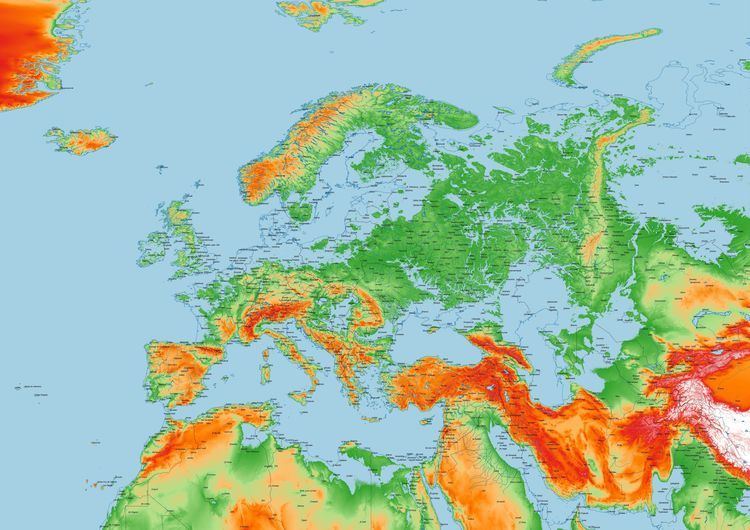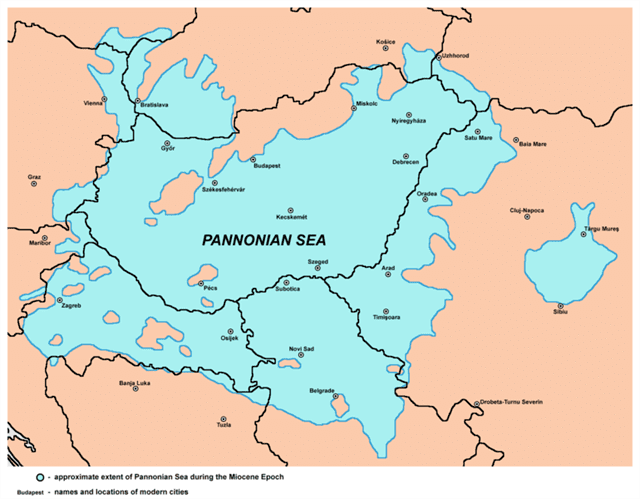 | ||
Similar Western Interior Seaway, Paratethys, Panthalassa | ||
The Pannonian Sea was a shallow ancient sea located where the Pannonian Basin in Central Europe is now. The Pannonian Sea existed during the Miocene and Pliocene epochs, when a three to four kilometre depth of marine sediments were deposited in the Pannonian Basin.
Contents
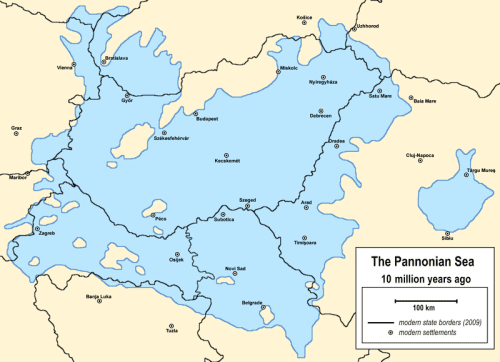
Vrbas pannonian sea
History
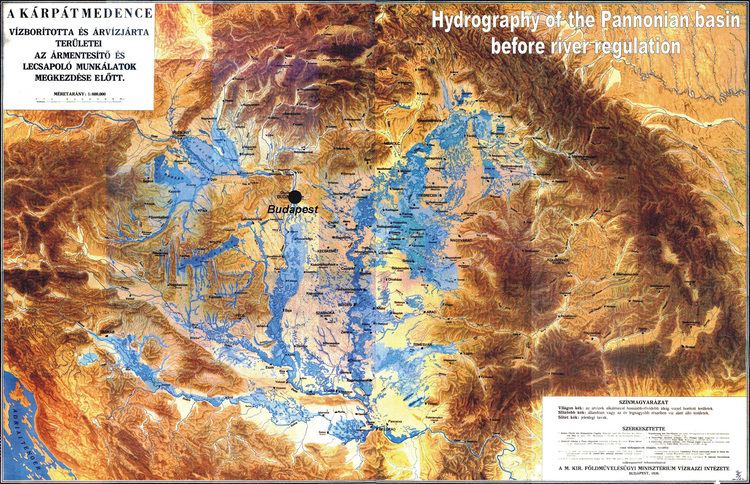
The Pannonian Sea, for most of its history, was part of the Paratethys Sea. A Miocene uplift of the Carpathian Mountains isolated the sea from the rest of Paratethys (about 10 million years ago).
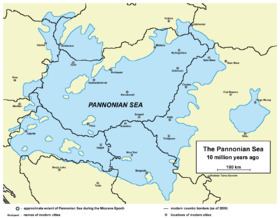
During its first historical phase, the Pannonian Sea had a western connection with the Mediterranean Sea through the territories of the modern Ligurian Sea, Bavaria, and Vienna Basin. Through the Đerdap Strait, the Pannonian Sea was linked to the Paratethys in the Wallachian-Pontic Basin. The Pannonian Sea was also attached to the Aegean Sea through the modern Preševo Valley.
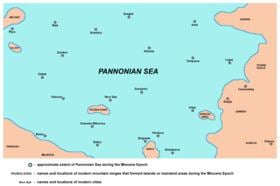
Due to its diverse history the salinity of the sea often shifted. The decrease of salinity resulted an endemic fauna.
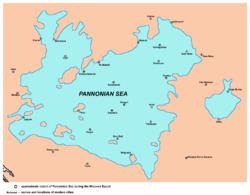
The Pannonian Sea, which persisted for approximately 9 million years, ultimately ceased its connection with the Paratethys, transforming into a permanent lake known as the Pannonian Lake. Its final vestige, the Slavonian Lake, evaporated during the Pleistocene epoch. The modern Pannonian island mountains, including Mecsek, Papuk, Psunj, Krndija, Dilj, Fruška Gora, and Vršac Mountains, serve as remnants of the erstwhile islands that dotted the Pannonian Sea.
In popular culture
In 1979, the Serbian musician Đorđe Balašević released a single titled Panonski Mornar (Pannonian sailor).
